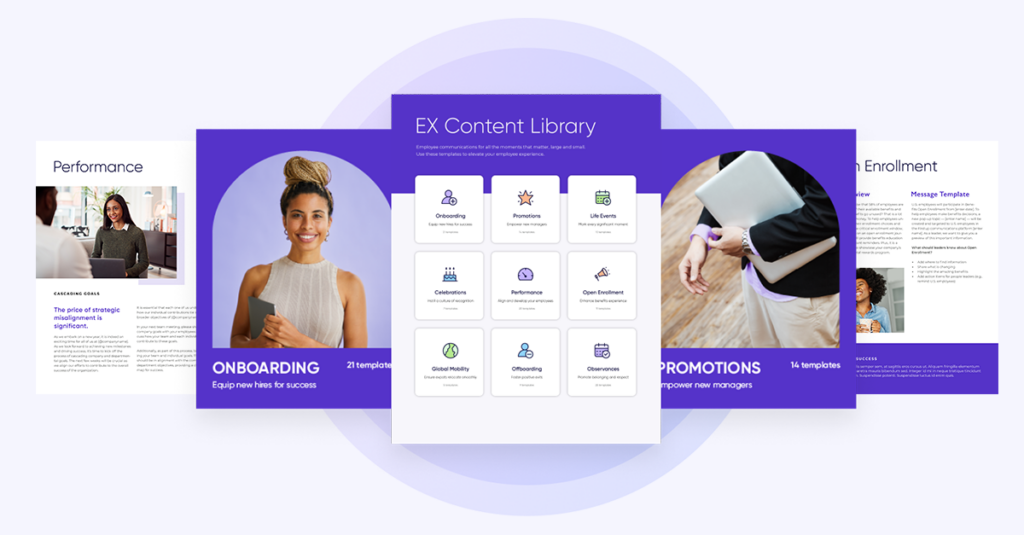During challenging times, there are several ways of looking at things. We can dwell on how tough things are and feel daunted about how to get through them. Or we can see it as a catalyst for change.
This is how I am choosing to see our recent research results, The Deluge of Unhappy Workers. With the results showing that employees everywhere feel undervalued and uninformed, it’s easy to feel disheartened. It’s impossible not to be alarmed by the statistic that over 50% of respondents felt that their employer did not value their role.
However, as concerning as these numbers are, this information presents an incredible opportunity for businesses to overhaul how things are done – transforming themselves into talent magnets.
Our Principal Solutions Consultant, Rupert Coghlan, recently participated in a panel of speakers to discuss the drivers behind a great employee experience. Joined by Louise Moreton from Finsbury Glover Hering, Paul Miller, Founder of the Digital Workplace Group, and Robert Tennant, Head of UK and International Development at The Storytellers, the panel all agreed that we are living through an incredible time of change, and the businesses that can seize this opportunity will benefit immensely.
Louisa was optimistic in her view – seeing the research as a clear map of the journey that businesses need to take. “This is employees telling us exactly what they want – 38% want better communications between employers and employees. They are telling us they will feel more valued if they feel seen. They want to feel that they are contributing to strategy.”
Alignment was a key theme throughout the discussion. Robert detailed how he believes that this is the starting point for engagement and that those leaders that take the time to consider, collectedly and as individuals, how aligned they are around every single element of the business journey will be the ones to unlock the true potential in times of uncertainty. This will give context to the strategic narrative and enable every level in the organization to make the connection between their role and business objectives.
He also pointed out that having a truly aligned narrative allows everyone in the organization, from the boardroom to the shop floor, to make a rational and emotional connection to the organization’s journey. Engaging workers in this way will enable pace, agility, opportunity performance – all the things executive teams crave.
For Paul, a sense of belonging and community was integral to the rites of passage that many organizations are going through. While transactional solutions such as better pay, flexible working, and more perks have a role to play, that sense of value is the cornerstone of building an organizational culture that people want to be part of.
The panel also had some insightful comments about what leaders can do to help workers feel more valued:
- Make it personal. It’s not the seismic shifts that make the most significant difference. It’s the small day-to-day interactions. Take the time to see and hear people and focus on those high-context engagements.
- Ownership. Everyone – from the shop floor to the C-Suite, should feel that they contribute towards strategy. Taking the time to engage workers from every business level in strategy development will ensure that people feel part of the journey and, more importantly, feel they can influence this.
- Supporting middle managers. An often-overlooked asset in engagement is team leaders. These individuals are regularly the ones on the ground, conveying the organizational message and receiving information from the workforce. Ensuring that these people are equipped to be fantastic communicators will help those on the shop floor feel visible in their day-to-day role and appreciate how they contribute to the overall business objectives.
- Technology to support productivity. Business leaders need to identify the blockers and barriers preventing people from doing their job to the best of their ability and take steps to make these processes more accessible by providing workers with the best possible tools and apps to do their jobs. This will not only boost productivity but also feelings of worth.
It was hugely uplifting to hear all the panelists agree that these transformative times present a massive opportunity for businesses prepared to take the meaningful steps to ensure their workforce benefits from an excellent employee experience. This commitment to communicating in a way that works for their people will mean that they will be the ones retaining top talent and attracting it.
Go All In
Find out how Fortune 100 companies are connecting with every worker, and how to apply their techniques at your own organization. Attune All In examines the hurdles and triumphs of U.S. Steel and Dow, and explores what they’re doing to engage their workforces at every point in the employee journey.
Download PDF









